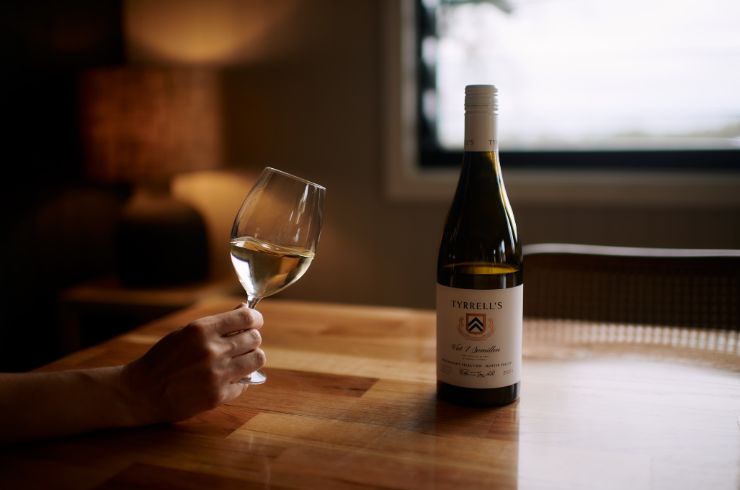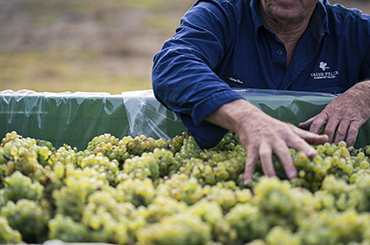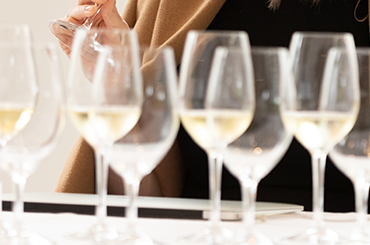The continued rise of Australian chardonnay is the most exciting development I have witnessed in Australian wine over the last 20 years. Looking back, it’s hard to believe that when I wrote my first Top 20 Wines of the Year list for the Australian Financial Review Magazine back in the early 2000s, I considered not including a chardonnay at all. I chose one – Giaconda, from memory.
It’s worth bearing in mind that the history of chardonnay, compared to say shiraz or cabernet, is relatively short in Australia and that original Margaret River plantings at Vasse Felix (1967), Moss Wood (1969), Cape Mentelle (1970) and Cullen (1971) all included cabernet but not chardonnay. The variety simply wasn’t on Dr John Gladstones' radar when his two papers convinced these wine pioneers to take a chance here.
Jump to Philip's reviews on four 2020 Oakridge Wines chardonnays.
Given the first commercially released chardonnay in Australia is generally acknowledged to be by Tyrrell's in the Hunter Valley in 1971, cuttings were hard to come by and the varietal was still an unknown proposition in Australia, let alone Western Australia when Leeuwin Estate (1975) and Cullen (1976) planted it.

Indeed, today’s new breed of mod-Oz chardonnay is a world away from the rich, oaky styles that predominated in the 1980s and 1990s. The James Halliday Chardonnay Challenge which I chaired from 2015 to 2017 (and was a panel chair at in 2020) and which has grown from 260 wineries (from 40 regions) in 2012 to just over 500 in 2019 (the entries have dropped slightly since Covid) is emblematic of the improvement and interest in the variety. It’s become the most significant wine show devoted to a single varietal in the world.
What’s interesting is even though wines are entered from up to 40 regions, only five regions have produced 95-point wines or more every single year since the competition began. They are the Adelaide Hills, Tasmania, The Hunter Valley (usually with just the same two winemakers/producers), Margaret River and the Yarra Valley. It’s worth noting that last year’s trophy was won by Montalto on the Mornington Peninsula, and that this region has only failed once to produce any 95-point wines.
With some 60 per cent of the 95-point (or above) wines between them and some 50 per cent of the total entries at last year’s show (and these figures are, give or take, the same each year) the two titans of Aussie chardonnay — in terms of the sheer volume of high-quality wines produced — are, unquestionably, the Yarra Valley and Margaret River.

At the core of this very French philosophy is the notion that while you can grow and make chardonnay successfully all over the world, you can only make Meursault in one place, and that's Meursault. Indeed, it is considered Meursault first and foremost, and chardonnay second. Line up a range of Meursault from a great producer such as Guy Roulot and you can clearly see the differences between the individual vineyards/terroirs in wines made using the same technique.
This is where the Yarra finds itself now with an impressive array of producers, such as De Bortoli, Giant Steps, Coldstream Hills, Hoddles Creek, Mac Forbes, Oakridge and others now producing multiple single vineyard wines. For this year’s Halliday Wine Companion I tasted, reviewed and scored four single vineyard wines from Oakridge where David Bicknell, the Godfather of modern Australian chardonnay, consistently makes wines that are on par with good Burgundy and at a fraction of the price.

David made the first Oakridge chardonnay in 2002, and the 2003 went on to win nine gold medals and three trophies setting a standard that has been maintained ever since. The first single vineyard wine, 864, was made in 2004 with fruit from the Tibooburra vineyard in Yellingbo in the upper Yarra and by 2005 David had made the decision to barrel ferment the wines in larger, 500m litre puncheons only.
Malolactic fermentation had been eschewed from the start and even lees stirring was stopped around 2008. As David puts it, having older, larger vessels “helped enhance fruit character” and “the malo and stirring are both techniques that bring wines forward” whereas he was looking to keep the wines fresh and as backward as possible during maturation.It was also around this time that David garnered a reputation for picking earlier than others. “It was flavour spectrum that we were chasing but with the added bonus of higher acidity and lower pH and it just made sense in that string of warmer vintages,” he says.
As to the about-to-be-released 2020 single vineyard chardonnays, this is a superb set of wines. Made similarly, my advice is to taste them alongside each other to see the subtle differences between the vineyards and the wines. From the fine-boned and cooler sited Barkala to the noticeably richer yet still very pure fruited Henk, which comes off a warmer, north facing site, to the depth, power, and complexity of the Funder & Diamond, these are Yarra and Australian chardonnays of the highest order.
Sign up to view these tasting notes and ratings
By becoming a member of Wine Companion, you'll have access to the largest database of wines in Australia.
The 2020 Henk Chardonnay is available now, the Barkala and Willowlake will release in June, and the Funder & Diamond will follow in August.






